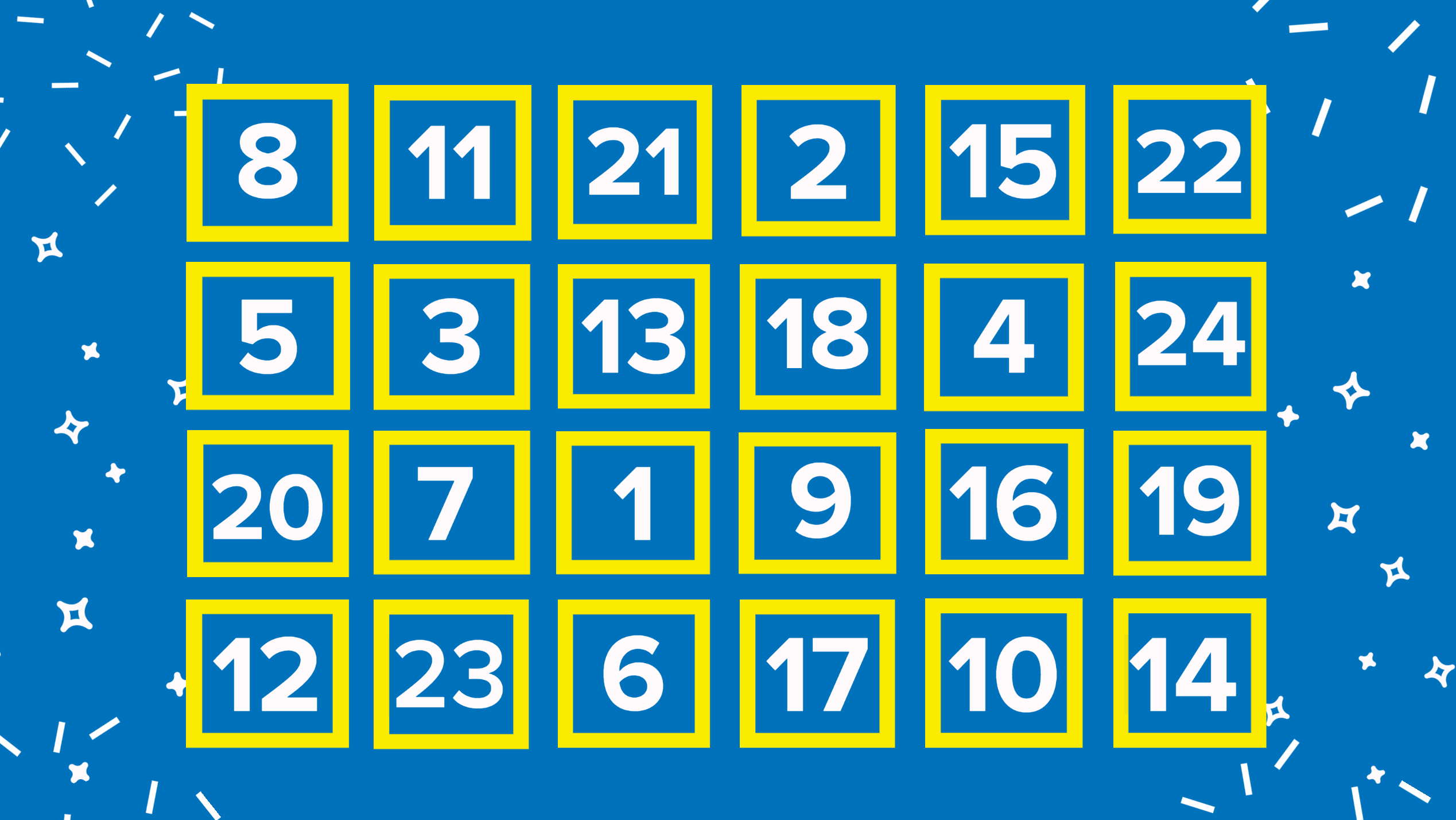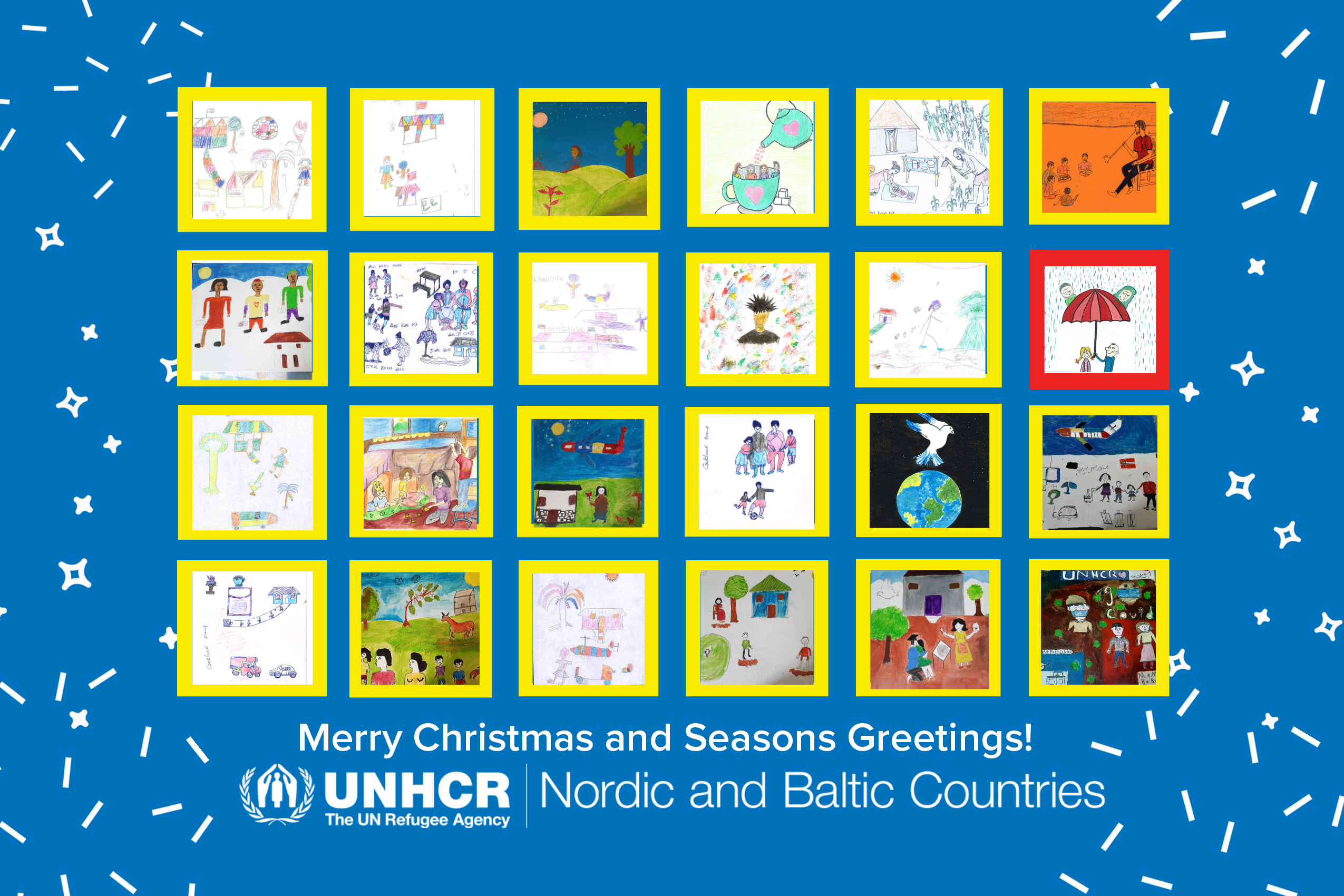How would you feel if you had been separated from your spouse or your children – and didn’t know if your loved ones were safe, or whether you would ever be able to see them again?
This is the harsh reality for many refugee families.
This December, our Christmas Calendar will every day reveal a drawing by a refugee or internally displaced child from one of the world’s displacement situations as we countdown to Christmas – a time to celebrate with family.
The children have been asked to draw what family means to them, and the results speak loudly: families belong together.

What is going on?
Conflict, violence, persecution and human rights violations have forced close to 80 million people to flee their homes, almost half of whom are children. When forced to flee, sometimes immediately and in the midst of chaos, many families are torn apart.
It may take months and sometimes years before they get news of where their loved ones have ended up. That is when their struggle to reunite begins.
The desire to join close family members is a key reason why refugees may wish to travel to Europe. Some resort to making dangerous and irregular journeys in order to be together, risking their lives, exploitation and abuse along the way. No family member should need having to take such risks; they have a fundamental right to be reunited – something that is called family reunification.
The Nordic and Baltic countries provide refugees with the opportunity for family reunification, although in recent years this has become much more difficult. Not being able to reunite with their family can have a significant impact on the mental health of refugees and on their ability to integrate and contribute to their host community. In practice, there are many obstacles – legal, practical, and financial – keeping refugee families apart and leaving family members in prolonged periods of uncertainty and insecurity:
- Procedural obstacles: Some countries require that family members abroad travel to an embassy to complete formalities or to collect a visa. However, the embassy may be far away and sometimes one is not even available in their country. Reaching an embassy can be both dangerous and costly, if not completely impossible.
- Administrative hurdles: Certain countries have imposed strict time limits for refugees to apply for family reunification, making it difficult if not impossible for refugees to provide all documents needed, whereas other countries apply long waiting times or have lengthy processing times. This leads to unsafe situations and even longer separation.
- Financial requirements: Some countries have put in place steep application fees, even for unaccompanied minors, as a condition to be reunited with their family, while others have strict income requirements to demonstrate the ability to support the family members. These requirements can prove difficult to overcome for refugees, who are trying to adapt to life in a new country after having fled conflict, war and persecution.
What needs to change?
The situation can be different. Politicians and governments have a choice to make family reunification simplified, ensuring it is straightforward, flexible, and accessible to refugees.
UNHCR is concerned about recent restrictions around family reunification – and we urge countries to remove the obstacles that currently prevent families from reuniting. Concrete changes could include curbing time restrictions and easing time constraints, ensuring that fees are kept moderate, and adopting a more flexible approach to accepted documents.
Family reunification is one of the key priorities for UNHCR in Europe. Last year, UNHCR released a report with concrete recommendations to European countries and the EU institutions to make the procedure for family reunification faster, smoother and safer for everyone.
See the report and UNHCR’s recommendations here.


